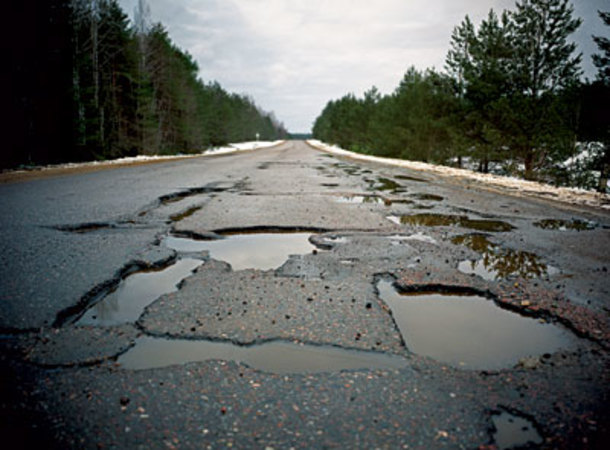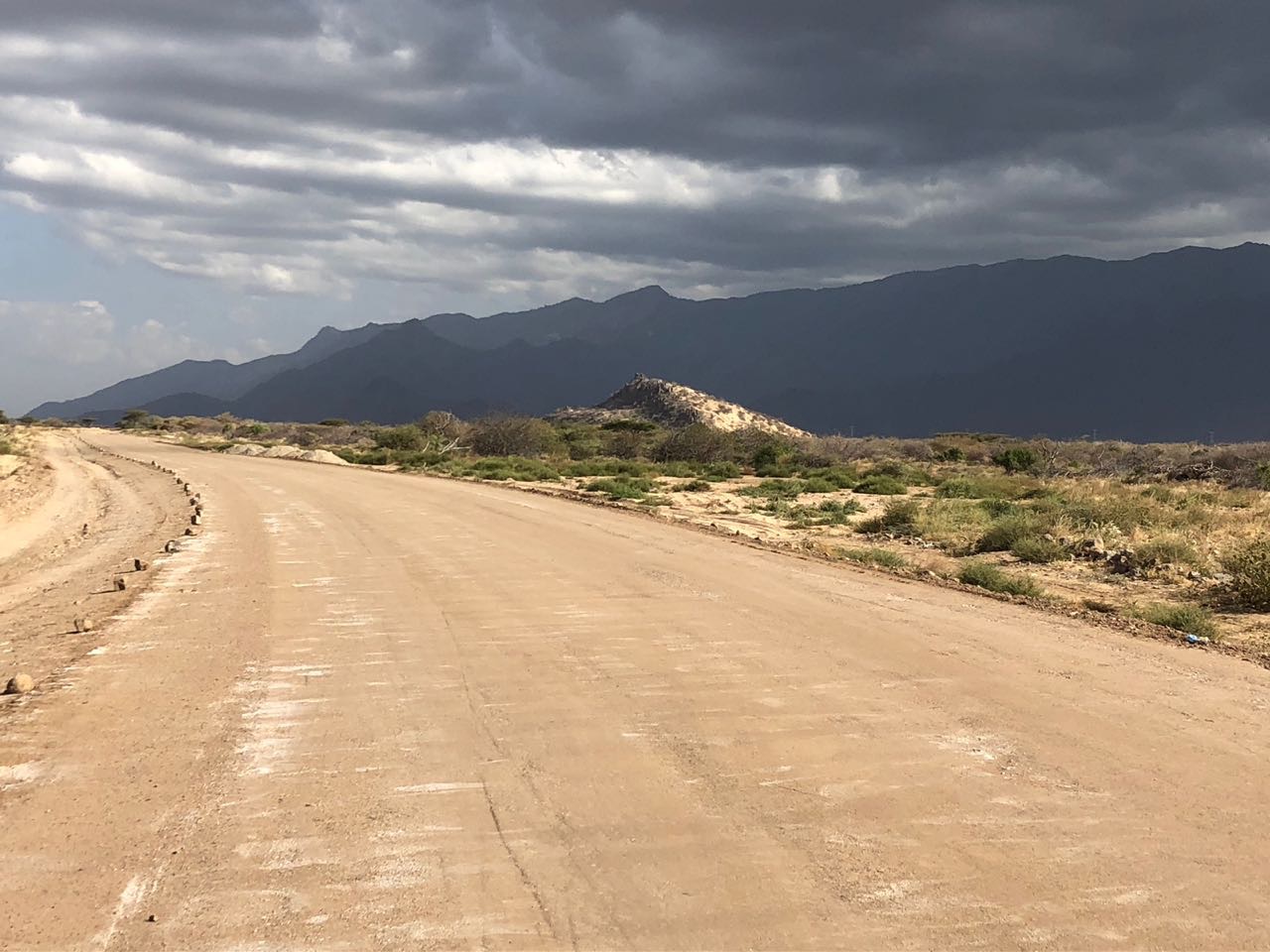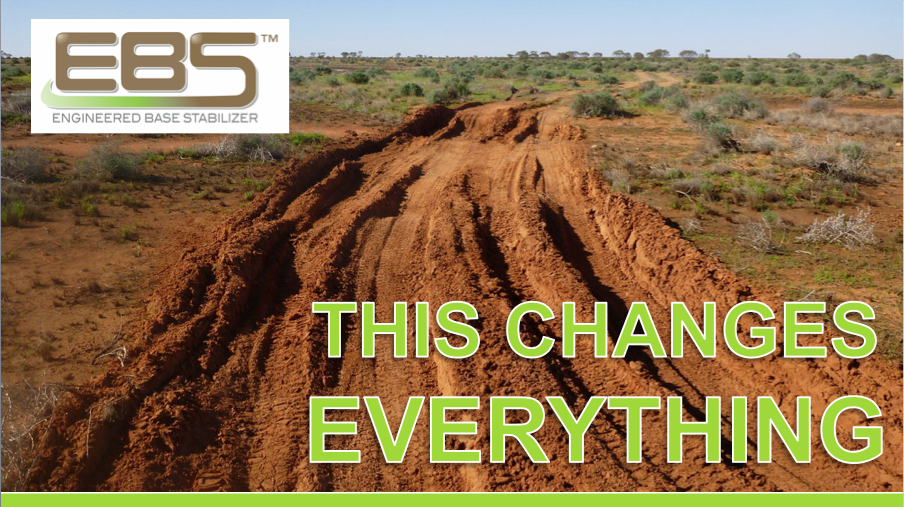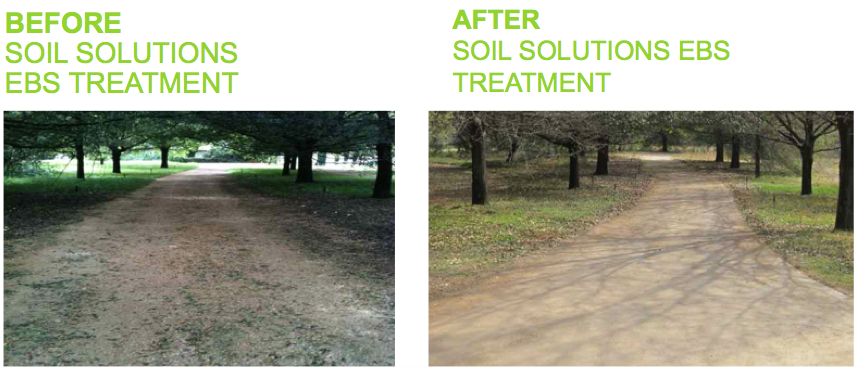Changing the mindset of Rural Gravel Road Solutions
When we discuss Road Improvement or Road Construction of gravel roads, immediately the methods most considered are asphalting or tarring or alternatively watering and grading of the road surface. The problem with these antiquated solutions is that neither are sustainable, cost effective, or long-lasting.
An Asphalt or Tar surface is porous, NOT water resistant and therefore susceptible to erosion and crack formation later leading to potholes.
These methods require a very costly maintenance routine including specialised equipment even for minor repairs.
Watering and grading leads to a massive waste of water and grading can only be executed so many times until the road is graded down to bedrock.

Grading the road down to bedrock causes another set of challenges including drainage as well as an additional requirement for the importation of suitable material to re-construct the surface and bring it up to the required level. In addition, water is the greatest enemy to a road surface and is the cause of erosion and pothole formation.

Improving (gravel) rural roads in developing countries – and thus increasing connectivity and accessibility will promote socio-economic growth in trade, agriculture, and in some cases tourism. There are many social, environmental and economic benefits to having upgraded road networks in rural communities.
However in order to do this in a sustainable manner; it will take a new perspective and a different approach.
The challenges are not the same as they were 20to 30 years ago – they are much worse :
-
- Aggregate sources are depleted and the transport or importation of it is impractical
- Cement is too expensive
- The roads due to insufficient maintenance are in far worse condition
- Global warming has caused changes in weather patterns that also have had a greater negative effect
A realisation that the traditional methods did not and certainly will not work going forward, needs to be made.
Yes – having knowledge of local materials and soil modification is important, however it will not change the fact that any new material put on a gravel road (without being sealed) has a very limited and seasonal life span – as water – being the number one enemy of gravel roads – will erode and destroy any efforts done.
In addition, there is the ever so delicate situation where there is an increasing demand for improved service delivery. Governments and municipalities are under pressure to perform yet cannot manage with the current maintenance requirements created using traditional methods – even if the huge amount of finance was available.
A redefinition of a “Sealed Surface” needs to be made.
Bitumen and asphalt are currently considered the expectation and what is most commonly used to ”seal” a gravel road – however the stabilization of the layers works is still required – and bitumen and asphalt are porous – thus requiring constant maintenance. This perception that sealing of a road surface can only be done with bitumen or asphalt needs to be set aside. While “tarring” the vast road networks is not feasible – neither are these continual maintenance cycles. But all is not doom and gloom….
See Soil Solutions Gravel Road Solutions
The upgrade or improvement of roads should not be looked at in isolation – in here lies a huge opportunity for job creation and skills transfer. In the funding provided – funding for proper equipment, training and community based maintenance programs should also be accounted for. Partnerships with road technology companies such as Soil Solutions should be formed – as they can provide innovative technology including an advanced Soil Stabilizer and Sealant along with the expertise required as well as training of local contractors and labour. The sheer size of the rural gravel road networks that require upgrading will allow SME entities to have continual work.

The answer lies in new technology – that provides an all-weather usable surface for gravel roads, that will provide a hard surface, that is water resistant and protected from erosion. This solution will allow for roads that can be used year round and eliminate the requirement for any remedial works including grading, compacting and watering again thereby providing a sustainable solution at a significantly reduced cost as compared to bitumen or asphalt and a significantly reduced environmental impact.

This will allow Governments to stretch existing budgets to provide a once off solution with an increase of 5 to 6 times the number of kilometresimproved and be able to continue upgrading without the cycle of constant maintenance.
Practitioners in the road sector need to be given the latitude to think differently and allowed to implement new methods and more sustainable solutions.
Being able to implement solutions that deliver a positive impact and immediate improvement will allow for continual and noticeable progress in the upgrade of rural roads – this will create the satisfaction of achievement that will attract talent to rural development.
Governments should consider working closer with companies in the private sector that have the expertise and proven track record of delivering these solutions in other markets and allow the solutions to be implemented on a larger scale. Thus ensuring that the funding is well spent and not washed away with the road in the next rainy season……

Please visit the pages listed below – Each of the pages include a project description, project report and project video.
- Ondo State Rural Access and Agricultural Marketing Project (RAAMP)
- Private Estate Gravel Road Improvement UK
- Xstrata Gravel Road Construction
- Private Estate Gravel Road Improvement
- LTWP Phase 1



